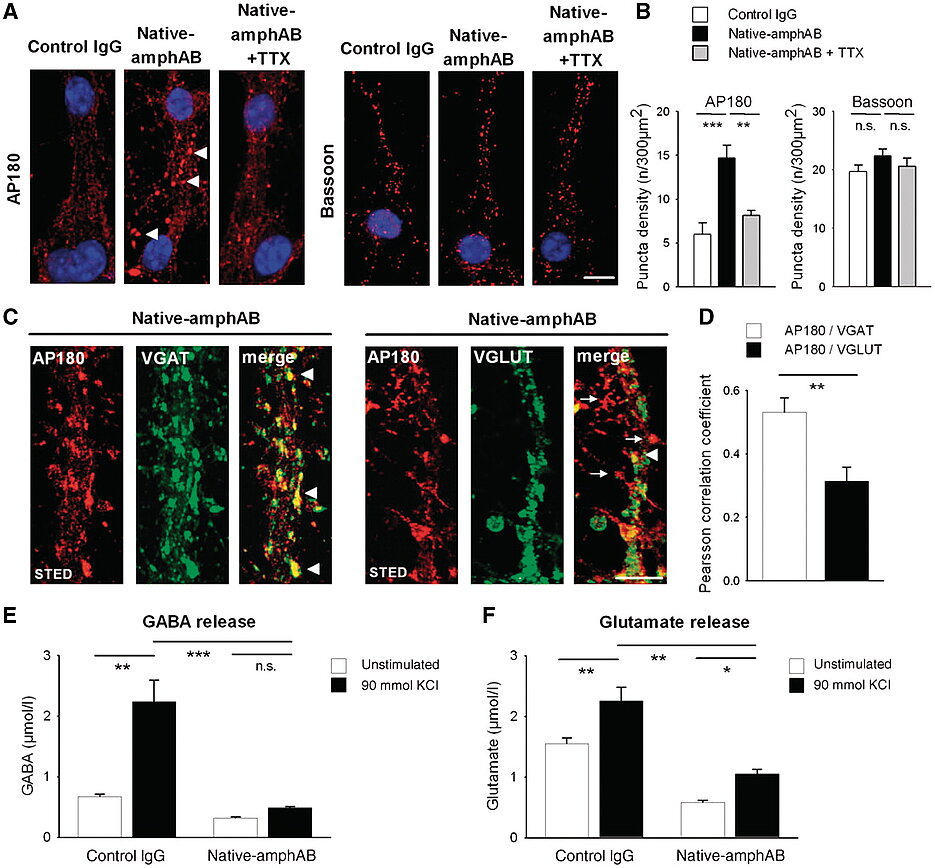Stiff person syndrome-associated autoantibodies to amphiphysin mediate reduced GABAergic inhibition
01/01/2011Geis C, Weishaupt A, Hallermann S, Grünewald B, Wessig C, Wultsch T, Reif A, Byts N, Beck M, Jablonka S, Boettger MK, Üçeyler N, Fouquet W, Gerlach M, Meinck HM, Sirén AL, Sigrist SJ, Toyka KV, Heckmann M*, Sommer C* (2010) (* equal contribution)
Brain 133:3166-3180
Synaptic inhibition is a central factor in the fine tuning of neuronal activity in the central nervous system. Symptoms consistent with reduced inhibition such as stiffness, spasms and anxiety occur in paraneoplastic stiff person syndrome with autoantibodies against the intracellular synaptic protein amphiphysin. Here we show that intrathecal application of purified anti-amphiphysin immunoglobulin G antibodies induces stiff person syndrome-like symptoms in rats, including stiffness and muscle spasms. Using in vivo recordings of Hoffmann reflexes and dorsal root potentials, we identified reduced presynaptic GABAergic inhibition as an underlying mechanism. Anti-amphiphysin immunoglobulin G was internalized into neurons by an epitope-specific mechanism and colocalized in vivo with presynaptic vesicular proteins, as shown by stimulation emission depletion microscopy. Neurons from amphiphysin deficient mice that did not internalize the immunoglobulin provided additional evidence of the specificity in antibody uptake. GABAergic synapses appeared more vulnerable than glutamatergic synapses to defective endocytosis induced by anti-amphiphysin immunoglobulin G, as shown by increased clustering of the endocytic protein AP180 and by defective loading of FM 1-43, a styryl dye used to label cell membranes. Incubation of cultured neurons with anti-amphiphysin immunoglobulin G reduced basal and stimulated release of γ-aminobutyric acid substantially more than that of glutamate. By whole-cell patch-clamp analysis of GABAergic inhibitory transmission in hippocampus granule cells we showed a faster, activity-dependent decrease of the amplitude of evoked inhibitory postsynaptic currents in brain slices treated with antibodies against amphiphysin. We suggest that these findings may explain the pathophysiology of the core signs of stiff person syndrome at the molecular level and show that autoantibodies can alter the function of inhibitory synapses in vivo upon binding to an intraneuronal key protein by disturbing vesicular endocytosis.
Comment in Brain 133:3164-3165






